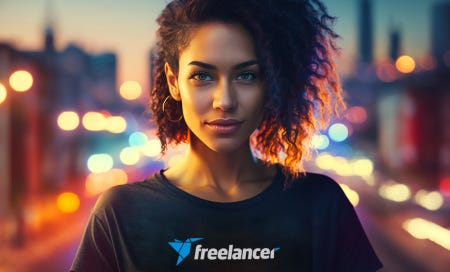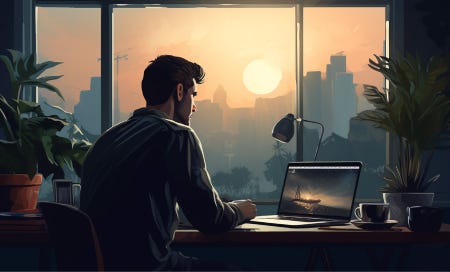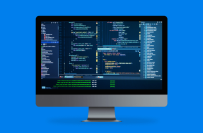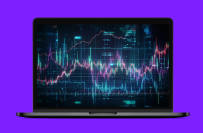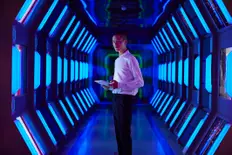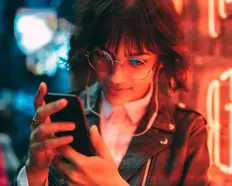Chat với Ava - Trợ lý kinh doanh AI của bạn
Xin chào, tôi là Ava, hướng dẫn viên AI giúp bạn bứt phá kinh doanh!
Cho dù bạn đang điều hành một doanh nghiệp hay đang mơ ước khởi nghiệp, tôi luôn sẵn sàng hỗ trợ bạn biến tầm nhìn thành hiện thực nhờ vào các freelancer sử dụng AI. Hay chia sẻ mục tiêu kinh doanh của bạn và chúng ta sẽ cùng tạo ra một dự án để các freelancer tài năng của chúng tôi có thể chào giá. Hãy biến tầm nhìn của bạn thành hiện thực!
Tôi đã có kinh doanh
Tôi mới bắt đầu kinh doanh
Đã xảy ra lỗi khi gửi cuộc hội thoại đến email của bạn. Hãy thử lại sau.
Bạn chỉ có thể lưu cuộc hội thoại của mình một lần mỗi giờ. Hãy thử lại sau.
Cuộc hội thoại của bạn quá ngắn. Hãy tiếp tục chat với Ava để kích hoạt tính năng lưu trữ.
Adobe Photoshop
In this article we’ll explain just how powerful Photoshop is and why it is used by photographers, graphic designers, marketers, influencers, etc.
20 thg 4, 2022 • 16 phút đọc
Cập nhật vào 6 thg 3, 2023 bởi Lee J.

Sao chép vào clipboard thất bại, hãy thử lại sau khi điều chỉnh quyền của bạn.
Đã sao chép vào clipboard.

Fact | Description |
|---|---|
Fact | Description |
Fact | Description |
Fact | Description |
Fact | Description |
Fact | Description |
Adobe Photoshop is so much more than just a photo editing program. It is a central hub that allows you to create and combine all aspects of digital design in one place to bring your creative vision to life. The software has a multitude of uses and is great for anything from editing photos to creating an awesome logo or a GIF.
If you’re looking to improve or enhance any image, Photoshop is the go-to program. It’s so popular, in fact, that it has even come to be used to describe the very act of editing an image – ‘Has that picture been Photoshopped?’
Source: Unsplash
In this article we’ll explain just how powerful Photoshop is and why it is used by photographers, graphic designers, marketers, influencers, artists and anyone else who needs professional quality images for any purpose.
We’ll look at:
What Adobe Photoshop is used for
How does it work?
Why Photoshop is so popular with all types of creatives
What file formats are compatible with Photoshop?
The different Photoshop packages and how to choose the right one for your purposes
Minimum system requirements for Photoshop
Photoshop for Adobe Illustrator
Photoshop for creating animation
Photoshop for creating NFTs
Photoshop for web design
Photoshop for video editing
Photoshop for photo restoration
Photoshop for PDF
The benefits of hiring a freelance Photoshop expert
What to look for in a freelance Photoshop designer
How much does it cost to hire a Photoshop specialist?
Who owns the rights to images designed or edited by a freelance Photoshop designer?
How to hire a freelance Photoshop designer on Freelancer.com
What Adobe Photoshop is used for
From its name alone, you’d be forgiven for thinking Photoshop is just a tool for touching up and enhancing photographs. But it is an incredibly powerful piece of software that can be used for:
Creating digital art
Creating NFTs
Creating animations
Creating GIFS
Editing videos
Designing web pages
3D rendering
Enhance colors
Mix colors
Remove red eye
Add contrast
Sharpen the image
Add someone or something into an image
Remove someone or something from an image
Add text
Removing flaws
Air brush the image to remove wrinkles, bags under the eyes or creases in clothing
Crop an image
Combine multiple images into one
You can choose to edit individual images or batches according to your needs.
Source: Unsplash
How does Photoshop work?
Digital images, whether downloaded, uploaded or created from scratch, are made of miniscule squares of color. These squares are known as ‘picture elements’ or ‘pixels’. Photoshop can be used to manipulate those pixels in any way you can think of to make your image look exactly how you want it to look.
Photoshop was designed to make photo editing easy and is packed full of tools that let you create all sorts of effects. Much of its success lies in the fact that the program uses multiple layers that can be altered and adapted independently of one another but come together to create the perfect image. This allows users to ‘stack’ the layers to create your overall effect without the pixels of each one becoming mixed. And that’s what makes Photoshop so incredibly versatile. Add things, delete things, play about with things, and if you decide you don’t like a layer, you simply remove it without affecting any of the other layers and damaging your creation.
There are no limits to how many layers you can include and what goes on each layer is entirely the choice of the person creating or adapting the image.
Tools and features are regularly updated and added. The toolbox includes digital versions of everything you would expect to find in an artists’ studio or photographers’ darkroom, and they are designed to replicate the real-life version as closely as possible. For example, digital paint brushes will wear away with usage in the same way that a real paintbrush would. This ensures that all aspects of digital art creation are consistent with more traditional methods. Of course, digital creatives can replace worn brushes and sharpen blunt pencils far more readily than their real-world predecessors – and they can even create bespoke brushes to get just the right effect.
Why Photoshop is popular with all types of creatives
When you see what Photoshop can do, it’s easy to understand why it’s so popular and why so many small business owners hire a Photoshop designer to make sure they get the most out of this stunning piece of software. It is essentially a blank canvas for your creative mind and enables you to bring any image to life – and then to hone it, play about with it, try different colors, textures or amendments and, if you want to, get rid of them all and return your image to its original state.
Source: Unsplash
Here are just a few examples of the way in which Photoshop is used by creatives:
Marketing photos can be adapted to perfection
You can create a logo for your brand using any combination of images, colors, textures and words
It can be used to create ultra-realistic mock-ups of packaging designs or web pages to show clients exactly what they will be getting and to make any amendments as early as possible in the design process
Create imagery in mobile app design
Combine images and text to create eye-catching posters or flyers
If you can think of an image for your socials, you can create it using Photoshop
Standing out online is both essential and incredibly difficult. Used well, Photoshop offers a chance for you to establish a strong brand identity and get noticed. If you’re in the digital marketing business, Photoshop may be the only program you will ever need to create stunningly consistent imagery across all platforms.
What file formats are compatible with Photoshop?
By default, Photoshop saves files in PSD (Photoshop Document) but it can also open or save documents in a variety of other formats.
Only a PSD file will save all the elements of an image so you should always make this version your master copy. However, when it comes to utilizing your image for maximum effect, other formats can be more useful than the PSD file.
When you’re uploading images to a website one of the most important considerations is how quickly they will load for visitors. This means you often need to use small images. For computer aided design projects that involve detailed 3D imagery, the picture will need to be larger and will usually be more complex. The purpose of your image will determine the best file format to save it in but remember to also save it in PSD.
The formats it can open and save files in include:
Large Document Format (PSB): PSD files are restricted to a maximum size of 2GB. Larger files will need to be saved as a PSB. All applied layers and filters are supported, and images can have up to 300,000 pixels.
Tagged Image File Format (TIFF): TIFF files are popular with photographers. This is a flexible format that stores files up to 4GB and is often used to store high-quality images before editing. A TIFF file opened in Photoshop will retain all its layers but when opened in another format then it will open as a raster image.
RAW files include lots of data that has been minimally processed. They are often larger than 2GB and will need to be flattened before saving.
Portable Document Files (PDF): PDFs are commonly used to display text, bitmap graphics and vectors.
Graphics Interchange Format (GIF): GIFs minimize the file size to improve transfer time. These are increasingly popular as a way of connecting on social media channels and are a great way to use Photoshop to enhance your online profile.
Portable Network Graphics (PNG): PNG files are used to display high quality images on websites to display high-quality digital images. They offer lossless compression and support a wide range of vivid colors.
Joint Photographic Experts Group (JPEG): The most common file for storing photographs. JPEG files compress files to make them smaller so they take up less storage.
The different Photoshop packages and how to choose the right one for your purposes
Photoshop is part of a whole suite of Adobe software programs called the Creative Cloud that all work seamlessly together. But Photoshop is not one single program. There is a choice of Photoshop programs and packages so you can choose the one that best suits your needs and your budget.
Source: Unsplash
If you’re new to Photoshop, you can get a free 7-day trial when you sign up. If you want to continue using it after your free trial is up, you will need to take out a subscription. There is a vast range of packages available from Lightroom which is ideal for amateur photographers who just want the basics to the Substance 3D package that allows you to create, capture and paint 3D materials or stage and render 3D scenes.
For those looking to get a basic understanding of the fundamentals of Photoshop, there are lots of books and online courses you can take. Fully mastering the program will take years and as Adobe regularly updates or adds features, if you’re not a full-time Photoshop designer, you’re unlikely to ever be able to call yourself an expert. But that doesn’t prevent you from having fun and letting your imagination go wild.
The more complex packages are suitable for professionals. If you need great quality design but don’t want to sign up for an expensive package that requires a high degree of ability, you can always hire a freelance Photoshop designer to create it for you.
The ultimate Photoshop product is Creative Cloud (often abbreviated to CC). This is the most comprehensive image editing software available and includes a sophisticated set of design and editing tools for heavy manipulation of images. This is definitely not for beginners but if you know an experienced Photoshop expert or decide to hire a freelance Photoshop Designer who uses Photoshop CC, then imagination is your only limitation.
Minimum system requirements for Photoshop
A powerful software package requires a powerful computer. Photoshop is compatible with Mac and Windows computers but to get the most out of it, your PC will need to have the right hardware components.
Your computer processor should have:
2.0 Ghz of processing speed
64-bit support
16GB of RAM
A graphics card with at least 2GB of GPU memory
500GB+ of storage space
It’s quite common these days for reasonably priced desktop PCs to come with 1TB of storage and if you can get one of those you will have plenty of space for lots of Photoshop images.
Source: Unsplash
If you plan to use Photoshop regularly, you can also buy an external hard drive to give you sufficient storage space.
Additional RAM can also be added to most PCs but if your processor is slower than 2.0 Ghz, it’s very unlikely that you will be able to replace the processor to increase the speed. Instead, it might be time to get a new computer or contact a Photoshop expert to create our design.
Photoshop for Adobe Illustrator
Adobe Illustrator is widely used by graphic designers. It features a vast array of tools that enable it to do far more than just draw so the name ‘Illustrator’ doesn’t really do it justice.
Professional designers will usually have Adobe Illustrator and Photoshop which allows them to paste their designs from Illustrator into Photoshop to create a link between the two and retain the layering. By doing this they are able to edit in Photoshop just as easily as they would in Illustrator.
If you only have a Photoshop subscription, you will still be able to open Adobe Illustrator files but the layers and components in it will be ‘rasterized’. This means the layers will be flattened so you will not be able to alter them individually using Photoshop.
SVG files will also be rasterized in Photoshop.
Photoshop for creating animation
Photoshop is a great tool for creating short animated clips or GIFS. By creating your animation on separate layers, you are able to make changes to one layer without affecting the rest in the same way as you would with a photo or image.
By changing the position of objects in sequential layers, you will make the content move.
You can edit layers individually if required but if there are objects or characteristics you want replicated consistently across all layers you can do that without having to add them to each layer in turn. You can also experiment with fading in or out by changing the opacity of each layer.
Source: Unsplash
The only limit on the number of frames you can create is the amount of memory available on your system. As Photoshop animations are high quality, they do tend to take up a fair amount of space and this can slow your computer down if you only have limited storage.
When creating a GIF you might want to set it to run continuously. If you prefer, you can make your animation run just once or on loop for a specified number of times.
If you want to make further edits at a later date, you will need to save your animation in PSD format.
Photoshop for creating NFTs
NFTs are big business and give everybody the chance to create or own a unique piece of digital art. But it is a sector fraught with deception and fraud.
If you’re looking to get in on the NFT craze either as an artist or collector, Photoshop is the place to go. Adobe uses a system called Content Credentials to ensure attribution data is stored on an IPFS (InterPlanetary File System). NFT marketplaces such as OpenSea, Rarible, KnownOrigin, and SuperRare are integrated with Content Credentials to provide the provenance that protects artists and traders.
Creating an NFT on Photoshop is just like creating any other piece of digital art but selecting the ‘Prepare as NFT’ option, you can protect your NFT against forgeries and duplicates.
Photoshop for web design
Photoshop is not really made for web design and there are other Adobe products that are better suited to actually designing web pages. However, it can be useful in the early stages of the design process. Photoshop allows you to create a mock-up of your front end design or app so you can see what it will look like. By identifying any design issues at this stage, you can make changes promptly and avoid having to undo months of work just before launching your site.
If you’re hiring a freelance web designer, ask them if they will provide a mock-up before proceeding with the live design.
Photoshop for video editing
You wouldn’t use Photoshop to create a feature length movie, but if you’re editing home videos or creating a short presentation and don’t have access to more sophisticated recording equipment it does a pretty decent job.
And if you’re not sure how to use the video editing software or don’t have the time to do it, you can always find a freelance Photoshop video editor to do it on your behalf.
Source: Unsplash
Photoshop for photo restoration
If you have physical copies of photographs that have become frayed or faded, Photoshop can restore them to former glories. In some cases, even missing sections can be added back in using the ‘Vanishing Point’ feature.
After scanning your image to Photoshop, you can edit it, repair faded and blemishes or add color to black and white photographs.
Photoshop for PDF
Photoshop works with all other Adobe products so you can use it to open and edit a PDF. However, it is worth noting that you will not be able to edit text or objects in the PDF unless it was created to preserve layer functionality (most PDFs are not). To edit the PDF you would have to follow the same procedure used to edit within a compressed JPG file.
The benefits of hiring a freelance Photoshop designer
Photoshop is a DIY graphic design tool that allows anybody (even those with limited tech knowledge) to create and share designs and images for any purpose. It can be great fun and once you get started with the myriad design tools available, you will probably find your creative juice start flowing.
But if you’re looking for creative design for professional purposes, it’s often better to find a freelance Photoshop designer . They have the most comprehensive set of design tools, experience with how the program works and an eye for creativity.
Designers understand how different Adobe products work together and will use the full Creative Cloud suite to create, edit and enhance their designs. They can also export the Photoshop images easily if they want to use alternative systems to make further edits.
Source: Unsplash
If you’re looking to create a logo or use Photoshop to establish a clear brand identity, you’ll be expecting your designs to be delivered to perfection and have longevity. It’s worth investing in a professional to ensure you don’t launch your new branding with something that is lukewarm rather than steaming hot.
The best and most memorable designs are those that have been bespoke created from scratch. While Photoshop offers templates that make life easy for amateur users, they won’t cut it in the overpopulated world of digital marketing. A freelance designer will work with you to take the seed of an idea that is in your head and make it into something that you will be proud to say represents your brand. And, of course, you get the benefit of their design experience rolled into the bargain.
When you’re working to a tight budget, they can even change the background or manipulate a photo to make it appear you shot your promotional images on location somewhere rather than in your back yard or the office parking lot.
If you just want existing images edited to enhance them, you may be able to do this yourself using Photoshop but it’s worth considering whether that is the best use of your time. In many cases, small business owners and entrepreneurs realize that by outsourcing photo editing to a freelancer and spending their own time on their core business, it is actually more cost-effective than laboring over Photoshop instead of doing what they do best.
What to look for in a Photoshop designer
Anyone can take out any Photoshop subscription and call themselves a designer. But if you’re going to pay for their services, you will need to conduct due diligence before going ahead and employing someone.
So, here are the top tips for finding a top-quality Photoshop designer:
Check their portfolio. You’ll want to see that either they specialize in creating designs in the style you’re after or have a diverse collection of designs and can turn their hand to anything Photoshop. Look closely and get an idea of their attention to detail. The tiniest mistake can adversely affect even the best designs.
Look for similarities or familiar photos in their designs that indicate they regularly use stock images. While the occasional stock image is ok as part of your design, they are all over the internet and do nothing to help you stand out – unless you (or a clever designer) subvert them in some way.
Ask them about their design process. You’ll need to know the sequence of events, timescales for completion of each stage of the project and whether they limit the number of revisions they will make.
Have a look at their reviews to see what previous clients say about them. Think about how professional and punctual they appear in addition to comments about the quality of their design.
Source: Getty
How much does it cost to hire a Photoshop specialist?
The cost of hiring a Photoshop specialist very much depends on the complexity of the task, the individual’s expertise, and where they are in the world.
With Freelancer.com, you can hire a freelance Photoshop designer from anywhere in the world at their local rates.
Prices range from $2 to $100+ and it is just a case of finding the freelancer who best suits both your needs and your budget.
Who owns the rights to images designed or edited by a freelancer?
You do. If you owned the rights to the image initially, you retain them. When you accept the completed work, you also accept the rights to the edited image via a ‘Copyright Transfer’.
For additional peace of mind, you can ask the Freelancer to sign a Non Disclosure Agreement (NDA) to ensure they do not discuss or share the project with anybody.
When it comes to using Photoshop, it’s important to remember that success stems from a creative mind. If you jump straight into the software without a clear idea of what you want to achieve, you will soon be overwhelmed by what it can do and struggle to create a coherent image.
If you know what you want your end product to look like, you can master the features and functions that will allow you to pluck that image from your head and bring it to life on screen. If you don’t have a creative mind, try a brainstorming session with colleagues to come up with ideas for what your new logo or next image should be. Or hire a freelance Photoshop designer. They will discuss what you hope to achieve with the image, ask the right questions to tease out what you want it to look like and then create it for you.
Hiring a web designer on Freelancer.com
So, you’ve decided that hiring a freelance Photoshop designer on Freelancer.com is right for you. Now you need to decide how to go about it. Essentially, you have two options:
• Hire a freelancer directly
• Post a project
Searching through freelancer profiles to identify the right fit will take up more of your time than posting a project but if you have a specific profile in mind of the freelancer you want to recruit it can be the best way to make sure you only enter into discussions with people you might give the project to.
From the main page, us the arrowed menu to select ‘Find Photoshop Designers’.
From there, you can narrow down your search using the dropdown menus on the left of the screen.
Click ‘Hire Me’ to send a message to your chosen freelancer and discuss your project.
If you choose to post a project, interested freelancers who are available will contact you to discuss the job in more detail.
The other option is to post a project and invite interested freelancers to bid on it.
When posting a project it is important to:
Write a detailed brief
Indicate your budget range
Give a timescale
A clear brief increases your chances of being contacted by the top-performing freelancer Photoshop designers and editors. It shows that you are professional and prevents you from having to repeatedly answer questions from freelancers who need more details before they can decide whether they have the ability and time to take on the project.
When you receive bids, pay attention to:
• Bid amount (Don’t automatically rule out bids that are above your budget range. After discussion you might be able to negotiate a better price. You could even be willing to pay a bit extra for a top designer)
• Written response (Does their reply respond to your brief? Does it answer any questions you asked? Does it give you confidence in the freelancer?)
• Star rating
• Reviews
• Portfolio (Is it diverse? Are there examples of the freelancer’s work? Do they have a style? If so, does it suit what you’re looking for?
• Project completion rate
• On-time rate
• On-budget rate
Also, keep an eye out for:
The Preferred Freelancer badge. The orange badge with a white star indicates a high rating and good reviews.
The Verified badge. The blue shield with the white tick that shows Freelancer.com has verified the freelancer’s identity.
Find a freelancer Photoshop designer now!
Các câu chuyện liên quan
Nói chuyện với một kỹ thuật viên Co-Pilot để hỗ trợ dự án cho bạn
Các bài viết đề xuất riêng cho bạn
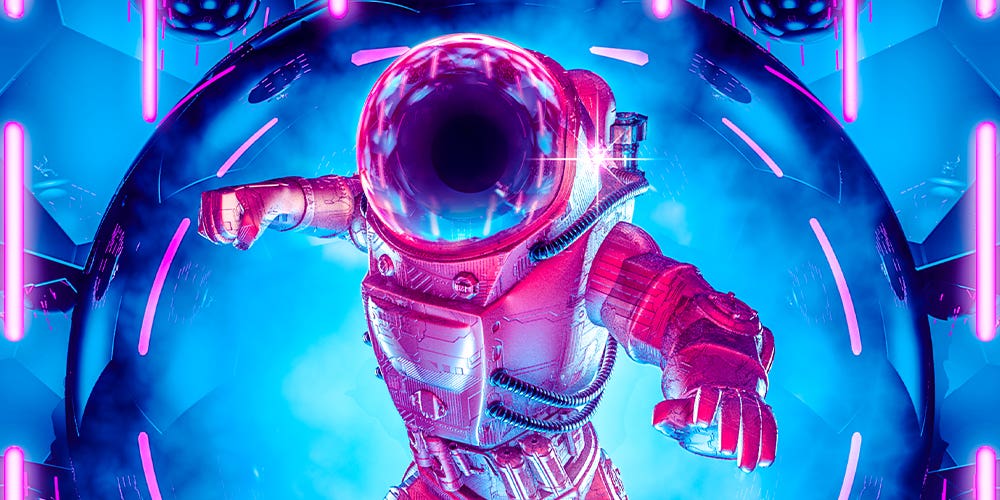
Great graphic design will solidify your brand identity and drive revenue. Find out how to hire a great designer and what you should expect to pay.
9 min read

The packaging design you use tells a story about your product. Find out how to grab consumers' attention with amazing graphic design
5 min read

Get inspired from some of the most unique business card designs in the world to make sure your card stands out from all the boring generic designs.
17 min read

Who says all free fonts are boring? We've put together a list of the best free fonts that'll make your design look both prestigious and delicious.
31 min read
Cảm ơn bạn! Chúng tôi đã gửi email chứa đường link để bạn lấy tín dụng miễn phí.
Đã xảy ra lỗi trong khi gửi email của bạn. Hãy thử lại.
Đang tải xem trước
Đã cấp quyền truy cập vị trí.
Phiên đăng nhập của bạn đã hết hạn và bạn đã bị đăng xuất. Hãy đăng nhập lại.






